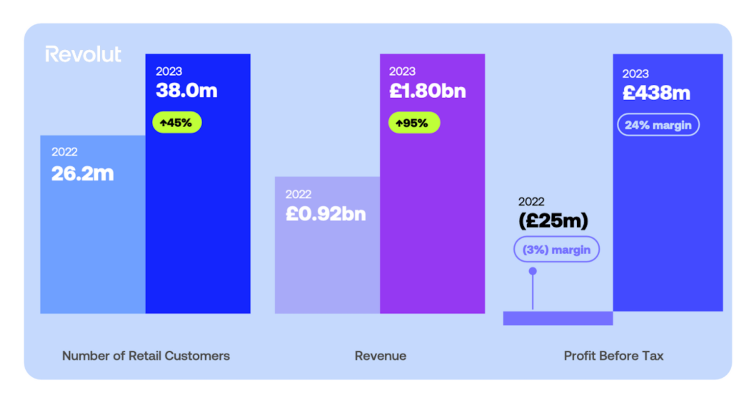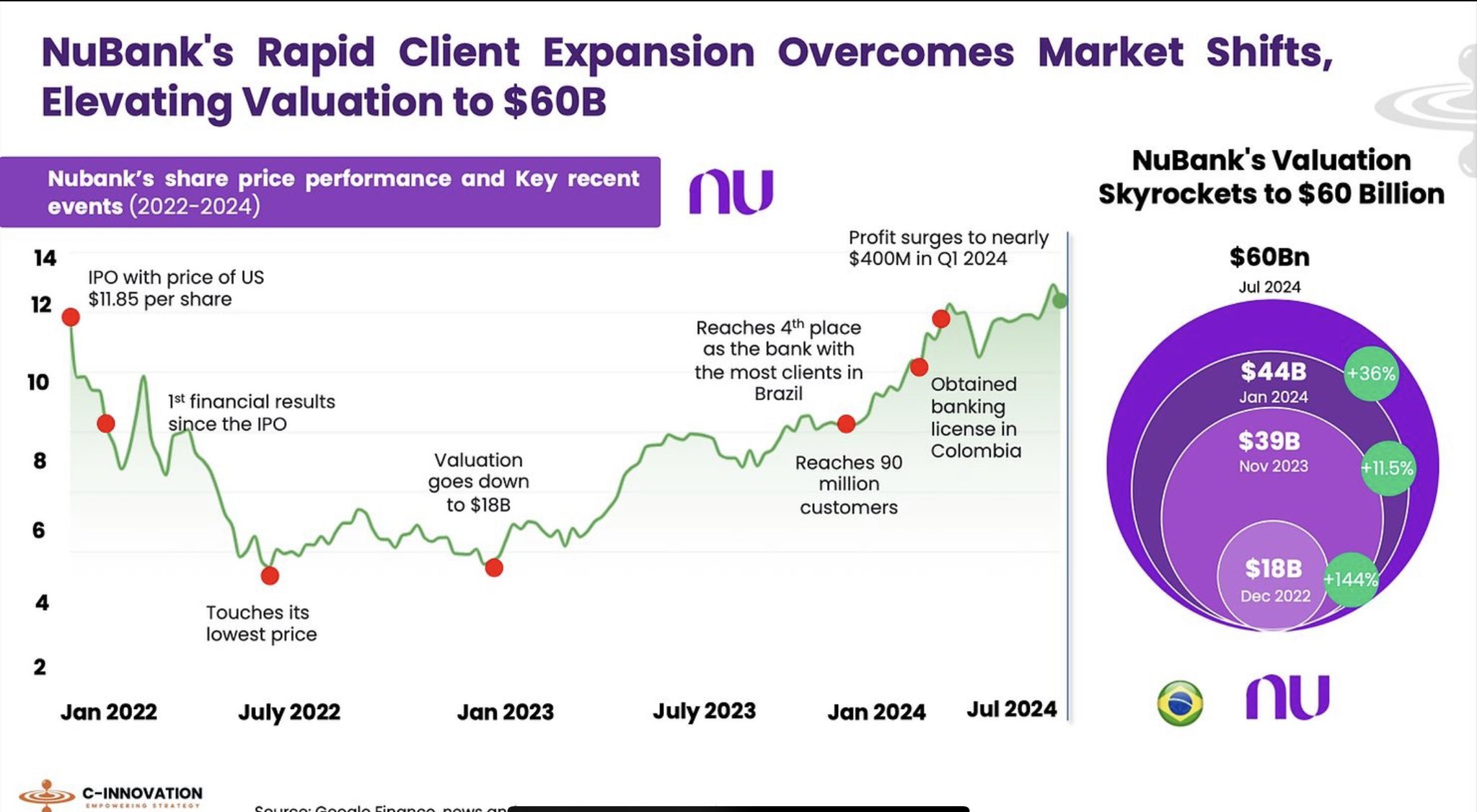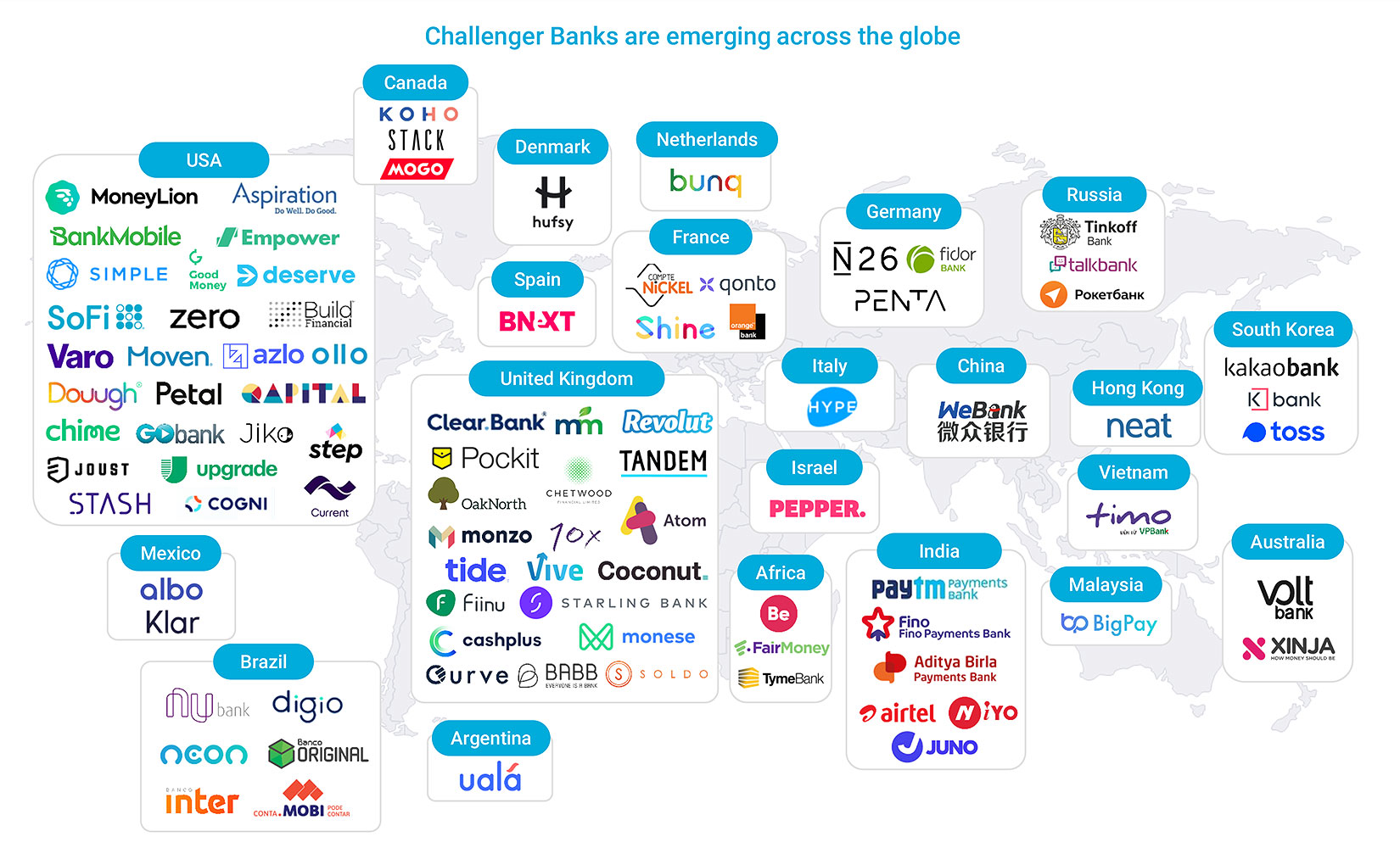
I remember ten years ago when fintech was emerging from under the hood and challenger banks become a new phrase. Most of the bankers I spoke to back then said they would never be really challenging. Ten years later, the situation is rather different. Revolut has over 40 million customers and is profitable; Monzo has 10 million customers and is profitable; Starling, with more focus on SMEs, has 4 million customers – of which half a million are small businesses – and is profitable … need I go on?
Source: Marcel van Oost
The standout has to be NuBank in Brazil, whose valuation has just exceeded $60 billion and has seen amazing growth.
Source: Marcel van Oost
Of course, some have failed and some have been acquired, but it is amazing how vibrant the sector has become.
Source: Aerospike
Why are they succeeding? Well, for fairly obvious reasons:
- Innovation: Challenger banks often use technology to offer a more seamless and convenient banking experience, such as mobile-only banking apps and digital-only accounts.
- Faster Sign Up – Many challenger banks focus on the fastest onboarding process possible, even issuing virtual cards that can be used to make payments before the real one arrives.
- Fees – Challenger banks may have lower fees than traditional banks.
- Customer service: Challenger banks often have a more direct and personal approach to customer service, and many offer extended hours of support through digital channels.
- Niche services: Some challenger banks focus on specific market segments or niches, such as poor credit or small businesses, and may offer specialized products and services tailored to those groups.
- Online banking experience: Challenger banks focus more on the online banking experience, making it easier and more efficient for customers.
Source: Business Expert
But you have to realise that traditional banks are not ignoring the challengers. In fact most traditional banks are hiring engineers and developers from the challenger banks, and getting them to develop similar functionalities on their apps and systems. The market is hot.
One of the main points I make however, is that challenger banks are thriving as transactional banks dealing with day-to-day transactions, but most are not gaining assets and loans at scale in the same way as traditional banks. Equally, most challenger banks are focused upon consumer banking, when the real money is made in commercial and investment banking.
So, what’s the future (WTF?).
The future is one where challenger banks have succeeded in challenging certain areas of traditional banking but, the more inroads they make, the more likely they will be targeted. Think of a challenger bank with a big bullseye on their bank that the big banks are trying to shoot.
The future is going to be one where more challengers will be acquired, targeted, imitated and failed. Having said that, the future is one where some challengers will continue to breakthrough, grow, thrive and succeed. On the latter, you have to wonder who you would bet on. Personally, I would say the ones that are doing well today – Chime, Bunq, NuBank and others – are not going to go away. They will continue to grow and challenge.
Chris M Skinner
Chris Skinner is best known as an independent commentator on the financial markets through his blog, TheFinanser.com, as author of the bestselling book Digital Bank, and Chair of the European networking forum the Financial Services Club. He has been voted one of the most influential people in banking by The Financial Brand (as well as one of the best blogs), a FinTech Titan (Next Bank), one of the Fintech Leaders you need to follow (City AM, Deluxe and Jax Finance), as well as one of the Top 40 most influential people in financial technology by the Wall Street Journal's Financial News. To learn more click here...




